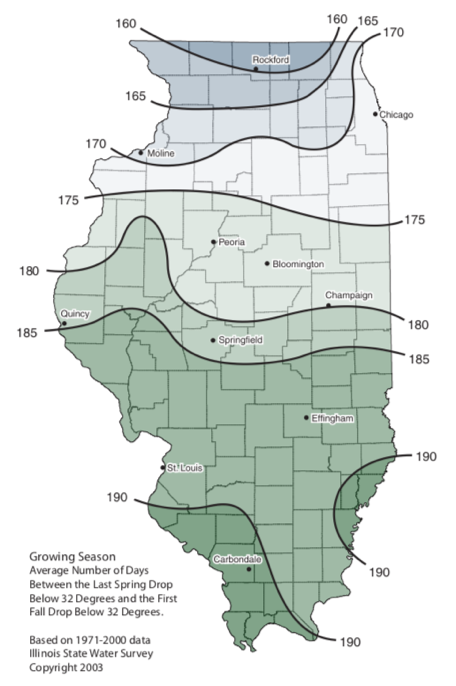Timing of cover crop planting is essential for achieving your goals and getting the most biological and economical value out of the cover crop species you have selected to meet them. That is equally true when we talk about planting cover crops in the fall ahead of corn or soybeans. Each cover crop species can provide its own unique benefits to both the following crop as well as the soil. For us to realize the benefits of cover crops they must be properly managed and good management starts with the appropriate seeding date. If we expect payback from our investment in cover crops we need to do all that we can to ensure the success of the plants we have chosen to achieve our goals and improve our cropping system.
It Starts with Species Selection
Cereal rye, annual ryegrass, tillage radishes, spring and winter oats, rapeseed and crimson clover are a few of the favorite fall cover crops used in Illinois. Determine what crop you plan to grow the following year and consider cover crop species that will be complementary to that crop. The Midwest Cover Crop Council has an online
cover crop decision tool that allows you to input your goals, cash crop, location, harvest and planting dates. This tool is also available as a phone app to help with you cover crop planning.

Where Do You Live in the State?
There are major differences in the growing season from northern Illinois to southern Illinois. The average length of the growing season varies from about 190 days in far southern Illinois to just 160 days in far northern Illinois. The actual length can vary from year to year depending on the date of the last frost in the spring to the date of the first frost in the fall.
Some cover crops, like tillage radishes, when established will take several nights of 20-degree temperatures to be terminated. Cereal rye can essentially be planted anytime in the fall in any geographic area of the state. If rye is planted to control soil erosion, an earlier planting date is preferred to achieve better rooting and ground cover. Annual ryegrass and certain clovers need to achieve good fall growth for them to not winterkill. For your winter-terminating cover crops to bring benefits to your conservation cropping system they must achieve good growth in the fall.
Plan For Success
For optimum success, select a cover crop you will be able to plant in a timely manner before or after harvest that will also complement your following cash crop. When planted at a suitable time cover crops can help you achieve your goals, improve your chance of success, and make for a more profitable system. And there is nothing wrong with doing some self-discovery and testing different species yourself to see which you like better and which are achieving your stated goals.



 and then
and then